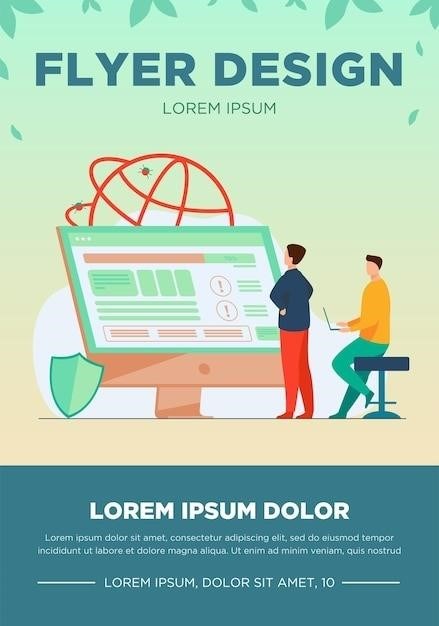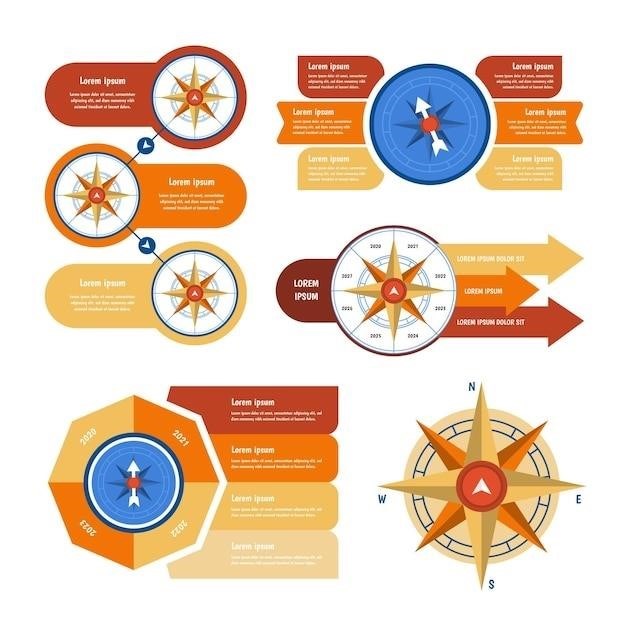This UVM verification tutorial will guide you through the essentials of the Universal Verification Methodology (UVM) and equip you with the skills needed to build robust and efficient verification environments for complex digital systems. The UVM provides a framework for modular and reusable components, making it easier to create testbenches that are scalable and adaptable to different scenarios. This tutorial will cover topics like UVM testbench architecture, sequence and sequence items, transaction-level modeling (TLM), reporting, and best practices for effective verification.
Introduction to UVM
The Universal Verification Methodology (UVM) is a powerful and widely adopted standard for developing verification environments for complex digital designs. It is based on the principles of object-oriented programming (OOP) and provides a framework of reusable and modular components, making verification processes more efficient and scalable. UVM was developed by Accellera, a consortium of industry leaders, and is built upon the foundation of the Open Verification Methodology (OVM) and the Verification Methodology Manual (VVM). The UVM framework is designed to streamline verification tasks, enhance code reusability, and simplify the creation of robust and comprehensive testbenches.
UVM promotes a structured approach to verification by defining a set of core classes and interfaces that serve as building blocks for the verification environment. These classes encapsulate common verification tasks, such as stimulus generation, response analysis, coverage collection, and reporting. By leveraging these pre-built components, engineers can focus on the specific aspects of their design under verification, rather than reinventing the wheel for basic verification infrastructure; This modularity allows for faster development cycles and reduces the risk of errors in the verification environment itself.
UVM also introduces the concept of “phases,” which are specific stages in the simulation process where different actions are performed. These phases ensure a well-defined and predictable execution flow for the verification environment, allowing for proper initialization, execution, and analysis of results. This structured approach helps to eliminate potential inconsistencies and ensures that the verification process is conducted in a consistent and controlled manner.
UVM TestBench
The heart of a UVM verification environment is the testbench, which serves as the central orchestrator for simulating and verifying the design under test (DUT). The UVM testbench architecture is structured hierarchically, with distinct components responsible for specific tasks. This modular approach promotes code reuse and simplifies the creation of complex verification environments.
At the top level of the UVM testbench is the “env” (environment) component, which acts as the overall coordinator. The env typically contains a number of sub-components, each with its own specific function. These sub-components include drivers, monitors, scoreboards, sequences, and agents. Drivers are responsible for generating stimuli and sending it to the DUT. Monitors capture the DUT’s responses and send them to the scoreboard for verification. Scoreboards compare the expected and actual responses to determine if the DUT is functioning correctly. Sequences define the patterns and scenarios of stimuli that are applied to the DUT. Agents are responsible for coordinating the interaction between the driver, monitor, and sequence.
The UVM testbench architecture encourages a clear separation of concerns, allowing for a more organized and maintainable verification environment. The modularity of UVM testbenches allows for easy customization and adaptation to different design scenarios. This flexibility is essential for efficient and effective verification of complex digital systems.
UVM Sequence Item
In the UVM, sequences are responsible for generating the stimulus that drives the design under test (DUT). To manage this stimulus effectively, the UVM utilizes sequence items. A sequence item is a data structure that encapsulates the information required for a single transaction or a specific set of actions. This data can include values for input signals, expected output values, timing information, or any other relevant parameters that define the desired behavior for the DUT.
The sequence item acts as a container for the stimulus data and provides methods for accessing and manipulating this data. It serves as a bridge between the sequence, which orchestrates the stimulus generation, and the driver, which sends the stimulus to the DUT. The sequence item allows for a clear separation of concerns, with the sequence focused on the logic and flow of the stimulus and the driver responsible for the actual transmission of the data.
The sequence item is a fundamental building block for creating reusable and modular sequences. By defining different sequence items, you can easily customize the stimulus generation for various test scenarios. The sequence item also plays a key role in transaction-level modeling (TLM), which allows for more abstract and efficient verification environments. The use of sequence items in the UVM significantly enhances the flexibility, reusability, and efficiency of the verification process.
UVM Sequence
In the UVM, sequences are the driving force behind stimulus generation, providing the logic and control for the testbench to interact with the design under test (DUT). They define the flow and order of transactions, orchestrating the interaction between the driver and the DUT. Sequences use sequence items, which are data structures that encapsulate the information needed for individual transactions, to generate the actual stimulus.
A key advantage of sequences is their reusability. They can be easily modified and reconfigured to generate different stimulus patterns, making them valuable for creating comprehensive verification environments. Sequences can also be hierarchical, allowing for complex stimulus generation by combining smaller sequences into larger ones. This modular approach promotes code reuse and simplifies the management of complex test scenarios.
Sequences often utilize random constraints to generate diverse and realistic stimulus. These constraints can be applied to the sequence items, ensuring that the generated stimulus adheres to specific requirements or limitations. This random stimulus generation is essential for achieving thorough verification, as it allows the testbench to explore a wide range of possible inputs and interactions with the DUT. The UVM’s sequence framework provides a powerful mechanism for creating sophisticated and flexible testbench architectures.

UVM RAL
UVM RAL (Register Abstraction Layer) is a powerful feature within the UVM framework designed to simplify and streamline the verification of register-based designs. It provides a standardized and abstract interface for accessing and manipulating registers within the DUT, shielding the verification environment from the underlying register implementation details. The RAL model acts as a mediator between the verification environment and the actual register hardware, enabling the testbench to interact with registers in a more intuitive and efficient manner.
The RAL model offers several advantages for verification engineers. It promotes code reusability, as the register access logic is encapsulated within the RAL model, allowing it to be reused across multiple testbenches or even projects. It also provides a higher level of abstraction, simplifying the verification process by allowing engineers to focus on the functional behavior of the registers rather than the low-level hardware details. The RAL model simplifies the process of generating stimulus and verifying register values, leading to more efficient and effective verification.
The UVM RAL model is typically implemented using SystemVerilog classes, with each register being represented as a separate class. The RAL model allows for various register access methods, such as read, write, and modify, as well as support for register fields, address spaces, and other common register attributes. This comprehensive set of features empowers verification engineers to create robust and scalable verification environments for register-based designs.
UVM TLM
UVM TLM (Transaction Level Modeling) is a powerful concept within the UVM framework that plays a crucial role in enabling efficient and scalable verification. It allows for the modeling and communication of transactions between different components within a verification environment at a higher level of abstraction. This abstraction level simplifies the verification process by focusing on the functional behavior of components rather than their low-level implementation details.
TLM communication within a UVM environment typically involves the use of interfaces, ports, and exports. Interfaces define the communication protocol between components, ports represent the endpoints of communication channels, and exports provide access to specific functions or data within a component. By utilizing these mechanisms, components can exchange transactions without requiring knowledge of the underlying hardware implementation details. This approach promotes modularity and reusability, as components can be developed and tested independently before being integrated into a larger system.
UVM TLM offers several key benefits for verification. It enables faster simulation times by reducing the complexity of the verification environment and reducing the amount of detailed logic that needs to be simulated. It also promotes code reusability, as components can be reused across multiple testbenches or projects. TLM simplifies the process of generating stimulus and verifying responses, making the verification process more efficient and effective. This approach fosters a more maintainable and scalable verification environment, as components can be easily modified and extended without impacting other parts of the system.
UVM Phases
UVM phases are a fundamental concept in the UVM methodology, providing a structured and well-defined sequence of operations that occur during the execution of a verification environment. These phases govern the creation, initialization, configuration, and execution of various components within the testbench. The UVM defines a set of standard phases, each with specific responsibilities and execution order, ensuring a consistent and predictable flow of events.
Some of the common UVM phases include the build phase, connect phase, end_of_elaboration phase, start_of_simulation phase, run phase, extract phase, and more. The build phase is responsible for creating and configuring components, while the connect phase establishes connections between components. The end_of_elaboration phase performs final initialization tasks after the testbench has been built and connected. The start_of_simulation phase is executed at the beginning of the simulation, while the run phase represents the main simulation execution loop. The extract phase is used to collect and analyze simulation results.
Understanding and utilizing UVM phases is essential for building robust and efficient verification environments. By leveraging the predefined phases, engineers can ensure that components are created and configured correctly, connections are established, and operations are executed in a controlled and predictable manner. This structured approach contributes to the overall efficiency and effectiveness of the verification process, allowing for more reliable and comprehensive testing of designs.
UVM Reporting
Effective reporting is crucial for any verification process, and the UVM provides a comprehensive framework for generating informative and customizable reports. UVM reporting allows engineers to track the progress of their verification activities, identify potential issues, and analyze the overall effectiveness of their testbenches. The UVM reporting system is built upon a set of macros that provide a standard mechanism for generating reports, ensuring consistency and ease of use.
UVM reporting macros, such as uvm_info, uvm_warning, uvm_error, and uvm_fatal, allow engineers to log different levels of severity, providing a clear indication of the nature and urgency of reported messages. These macros can be used to report test results, identify unexpected behavior, or highlight potential problems that need further investigation. UVM also provides mechanisms for controlling the verbosity of reports, allowing engineers to tailor the output to their specific needs.
The UVM reporting system also supports the use of custom reports, allowing engineers to create specialized reports that capture specific information relevant to their verification environment. This flexibility allows for detailed analysis and reporting, enabling engineers to gather the insights they need to make informed decisions about their verification strategy. By effectively leveraging UVM reporting, engineers can enhance the clarity and effectiveness of their verification process, leading to more robust and reliable designs.
UVM Advantages
The Universal Verification Methodology (UVM) offers a number of significant advantages for verification engineers, streamlining the development and execution of testbenches and ultimately leading to more efficient and effective verification processes. These advantages stem from the UVM’s standardized and modular approach, promoting code reusability, scalability, and flexibility. One of the key benefits of UVM is its ability to promote code reusability. The UVM’s modular architecture encourages the development of reusable components, such as drivers, monitors, sequences, and scoreboards, that can be readily integrated into different verification environments.
This reusability significantly reduces development time and effort, allowing engineers to focus on the specific aspects of their verification tasks rather than reinventing the wheel. Another significant advantage of UVM is its scalability. As designs become increasingly complex, the ability to scale verification efforts is paramount. The UVM’s hierarchical architecture allows for the creation of scalable testbenches that can handle large and complex designs without compromising performance or maintainability.
The UVM’s flexibility allows engineers to tailor their verification environments to meet the specific needs of their projects. This flexibility extends to the configuration and customization of testbenches, enabling engineers to adapt their verification strategies to different design scenarios. Overall, the UVM provides a powerful and versatile framework for verification, offering numerous advantages that can significantly enhance the efficiency and effectiveness of the verification process.




